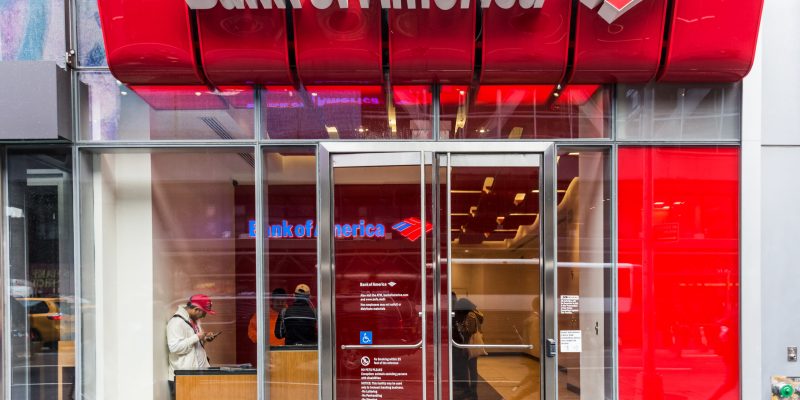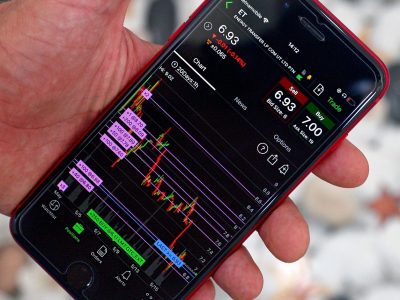
On November 8, 2024, Citi analysts upgraded Bank of America (NYSE: BAC) from Neutral to Buy, setting a new price target of $54, up from $46.
This revision, prompted by expectations of a favorable regulatory and interest rate environment, points to a potential upside of 20% from BAC’s current trading price.
Analyst Keith Horowitz cited the widening valuation gap between BAC and industry leader JPMorgan (JPM), seeing room for convergence.
Bank of America’s implied cost of equity (COE) currently stands at 10.2%, notably higher than JPM’s 8.7%, creating an attractive risk/reward profile for BAC investors, especially if the implied COE shifts lower.
Horowitz anticipates BAC’s net interest margin (NIM) could improve to 2.14% by 2026, buoyed by fixed-rate assets and maturities in swaps, which will support earnings growth.
Deregulation prospects under Trump’s second term
The broader banking sector, including BAC, has gained traction following Donald Trump’s reelection as US President.
Analysts expect that Trump’s administration will ease regulatory burdens, benefiting banks like Bank of America through potentially lighter capital requirements.
Additionally, higher bond yields and rising interest rates could bolster BAC’s performance, particularly in its commercial lending and wealth management divisions.
In this context, financial institutions could see growth acceleration, given the anticipated support for M&A activities and deregulation, especially in the financial and energy sectors.
A note from UBS highlighted that reduced regulatory oversight would enhance banks’ operational flexibility, positioning them to outperform in the upcoming years.
BofA Q3 earnings highlights
Bank of America reported solid Q3 results, outpacing analyst estimates with an EPS of $0.81, compared to expectations of $0.78, while revenues reached $25.3 billion, a 1% year-over-year increase.
The bank saw robust contributions from its Global Markets and Global Wealth and Investment Management segments.
Notably, the Global Markets division achieved a 12% year-over-year increase in sales and trading revenue, generating $4.9 billion.
BAC’s net interest income remained stable at $14.1 billion, a slight uptick from Q2’s $13.9 billion, though it reflected a 3% decrease from the same period last year due to higher deposit costs.
Despite an increase in provisions for credit losses to $1.54 billion, BAC’s performance in high-margin areas kept its earnings momentum steady.
Regulatory scrutiny adds minor challenges
Bank of America disclosed ongoing discussions with regulators regarding its anti-money laundering (AML) and sanctions compliance programs.
The Consumer Financial Protection Bureau (CFPB) also launched an inquiry into BAC’s Zelle transaction processing practices, signaling potential enforcement actions.
While these regulatory challenges may require enhanced oversight and compliance costs, BAC does not expect material financial impacts.
BAC’s fundamental business model remains robust, supported by consistent revenue from consumer banking, wealth management, and corporate lending, even amidst regulatory reviews.
BofA stock valuation
Bank of America currently trades at a price-to-book (P/B) ratio of 1.18x, higher than its three-year average of 1.13x and above its long-term average of 1.04x.
JPMorgan, by comparison, has a higher return on tangible common equity (ROTCE) and a P/B ratio of around 1.33x, reflecting its dominant position in the sector.
Given BAC’s relatively modest book value growth of 30% over the past five years, investors are pricing in the bank’s steady, if not rapid, value accumulation.
Current valuations suggest that, although BAC has growth potential, its price may already reflect much of the expected regulatory and interest rate-related benefits.
Preferred shares offer an attractive yield
For those looking at yield opportunities, BAC’s Series GG preferred shares offer a dividend yield of approximately 6%, although the risk of call limits potential price appreciation beyond the $25 threshold.
Despite the higher yields on these preferreds, investors should consider the near-term call risk and the more stable yet slightly lower yield offered by BAC’s Series L preferred.
With a CET1 ratio of 11.8%, BAC’s capital position remains strong, underlining the safety of these preferred dividends in the foreseeable future.
Bank of America has shown resilience amid shifts in regulatory expectations, market interest rates, and earnings performance.
However, a potential contraction in net interest income due to federal fund rate cuts could temper future earnings.
Now, let’s turn our attention to the technical indicators to gauge whether BAC can sustain its upward momentum.
BAC stock: strong bullish momentum in place
Bank of America’s stock has seen a strong bull run since November 2023 that has taken the stock from $25 levels to nearly $45, where it trades now. This bull run got further intensified recently following the Bank’s Q3 earnings release.
Source: TradingView
Taking this strong upward momentum into account, investors who have a bullish outlook can initiate long positions at current levels or wait for a retracement closer to $42 levels.
In either case, they can place a trailing stop loss at the stock’s 100-day moving average and ride this upward trend for as long as it sustains.
Traders who are bearish on the stock must refrain from shorting it at current levels. A short position must only be considered if the stock falls below its recent swing low at $41.11.
The post Citi upgrades Bank of America to ‘Buy’: can BofA stock keep climbing? appeared first on Invezz









